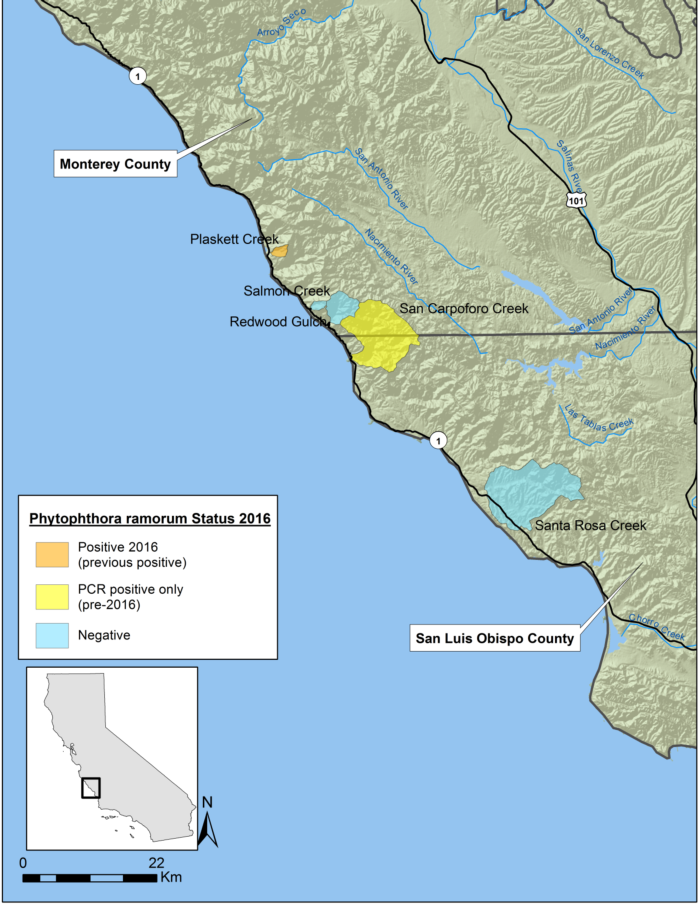Monitoring California streams for Phytophthora ramorum
Lead project scientist: Ashley Hawkins
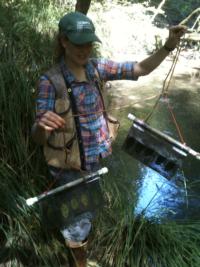
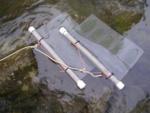
For stream baiting, Rhododendron leaves are placed in mesh bags that float just below the surface of the water (see photo). These "bait bags" are left in a stream for one to three weeks, depending on water temperatures (the cooler the water, the longer the leaves can be left out). 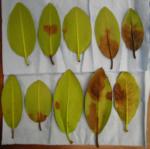
The California Stream Monitoring project was initiated in 2004 and stream surveys have been conducted annually each spring since, from February through June. The goal of this project is to monitor the presence and spread of P. ramorum throughout California, with a focus on areas at the edge of this pathogen's current range. For this reason, the distribution of waterways being monitored changes each year. The current focus is on frontiers of infestation in counties in which P. ramorum's distribution is still limited, particularly northern Humboldt County, and in uninfested counties that have a high risk of infection (e.g. Del Norte County). In 2016, stream monitoring sites were located in Del Norte, Humboldt, Monterey, and San Luis Obispo counties (see maps below).
This project depends on the efforts of many collaborators throughout northern and central California. Collaborators play a pivotal role in selecting waterways to be monitored in their area, and in deploying and collecting bait leaves. Current organizations and groups participating in the California Stream Monitoring project include: the Bureau of Land Management, Cal-Fire, the Del Norte County Agriculture Commissioner’s Office, the Hoopa Valley Tribal Forestry Department, Humboldt County UC Cooperative Extension, Humboldt Redwood Company, the Mattole Restoration Council, Redwood National and State Parks, UC Berkeley Forest Pathology and Mycology Laboratory (Garbelotto Lab), and the Yurok Tribe Forestry Program. This project also relies on the hard work of our dedicated undergraduate assistants.
Results from the 2016 stream monitoring season are illustrated in the maps below.
Detection of P. ramorum in Del Norte and Humboldt Co. watersheds, as of June 2016. 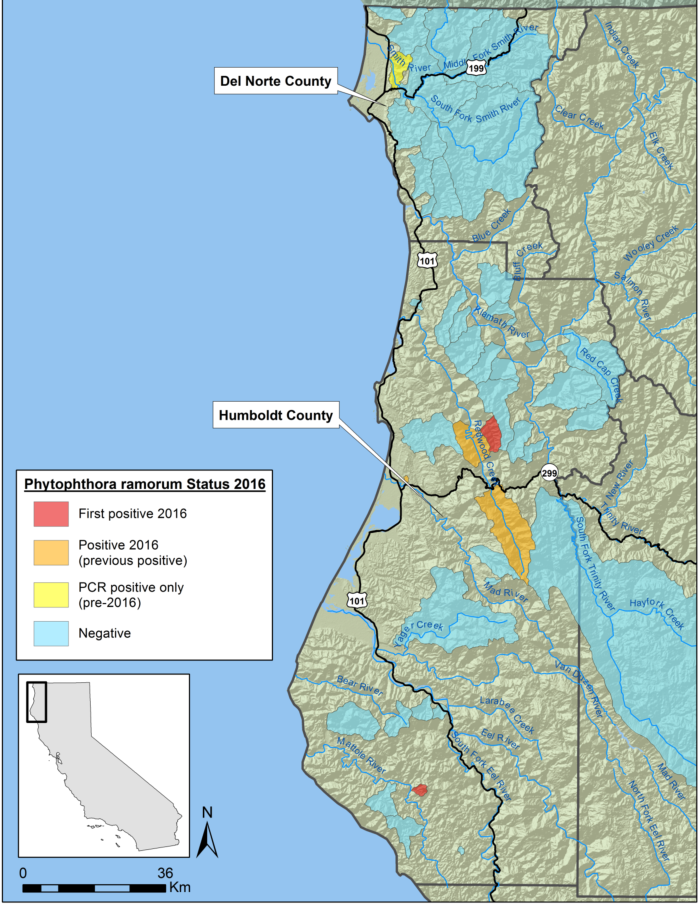
Detection of P. ramorum in Monterey and San Luis Obispo Co. watersheds, as of June 2016. 